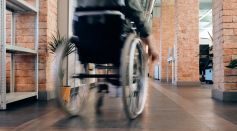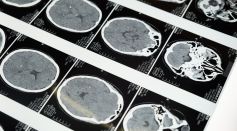Tags: Brain
Brain Condition Treatment May Be Possible As New Study Finds Immune Cells That Shield Brain, Spinal Cord Comes from Skull

Older Adults with Cerebral Palsy Receive Lesser Attention, Needs More Physical Therapy Than Usual

Alzheimer Treatment Breakthrough: Blood Oxygen Levels’ Link to Memory Loss Helps Study to Prevent Syndrome

Neuronal Activity Observed in Mice, Normal Routine Results to Brain Tumor
Brain's Memory Center Can Recognize Patterns During 'Infantile Amnesia,' But You Cannot Remember Being a Baby

Robotic ‘Third Thumb’ Impact People’s Brains, Allows a Person to Do More

Stroke Treatment: Nanophotosynthesis Can Reduce Dead Neurons, Help Blood Vessels Grow

COVID-19 Reduces Gray Matter in Frontal Lobe Resulting to Changing Mood, Neurological Disease

Even the Slightest Alcohol Consumption Harms the Brain, New Study Shows

Having Weird Dreams? AI-Inspired Hypothesis Explains Why
Songbird Neurons Reveals Building Block for Advance Cognition in Birds and Mammals
Brain-To-Text Technology Enables Paralyzed Man To Turn Imagined Handwriting Into Words on a Screen

Dunbar’s Theory Limiting Humans with 150 Friends, Stable Relationships Questioned
![Brain's Gateway to Conscious Awareness Finally Revealed [STUDY]](https://d.sciencetimes.com/en/full/33384/brains-gateway-conscious-awareness-finally-revealed-study.jpg?w=237&h=131&f=2b009f417bdcae5fad930c6fb5cff17f)
Brain's Gateway to Conscious Awareness Finally Revealed [STUDY]
Four Types of Alzheimer's Disease and How Machine Learning Helped Identify Them

Mind-Reading Headphones Work Like an EEG That Increase Noise Cancelling To Help Wearer Concentrate
Brain Treatments, Diagnostic Tests Utilize Low-cost, Widely Available Ultrasound Imaging

Brain Rotates Sensory Information to Prevent Overwriting Short-Term Memory

Hunger Could Be Turned off in the Brain, Study Finds

Snoring in Kids Linked to Developmental and Behavioral Issues, Study Finds
Most Popular

Will Earth's Magnetic Poles Flip Next? Magnetic Pole Reversal Explained Through Cutting‑Edge Magnetosphere Science

Relativity Time Dilation Explained: The Physics of Time and Why It Moves Differently in Space

How Lightning Science Reveals Why Charged Storms Are Rising with Global Warming Effects

How AI Is Used in Weather Prediction: Smarter Forecasting Through Machine Learning





